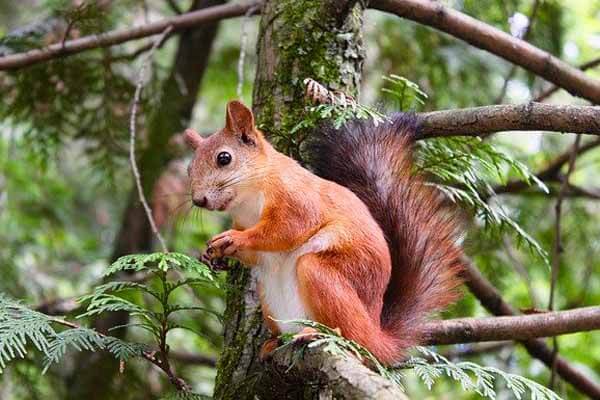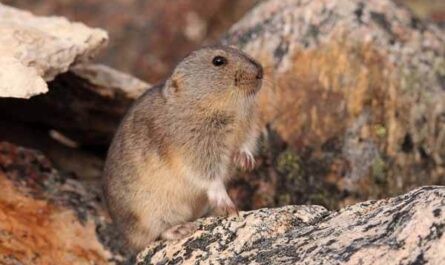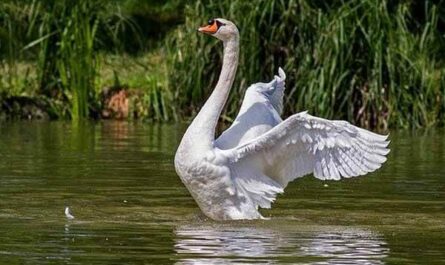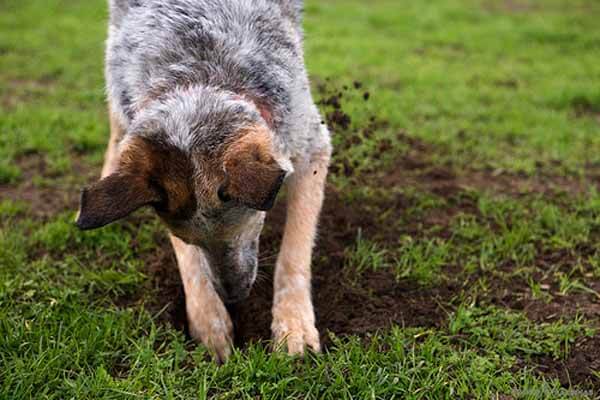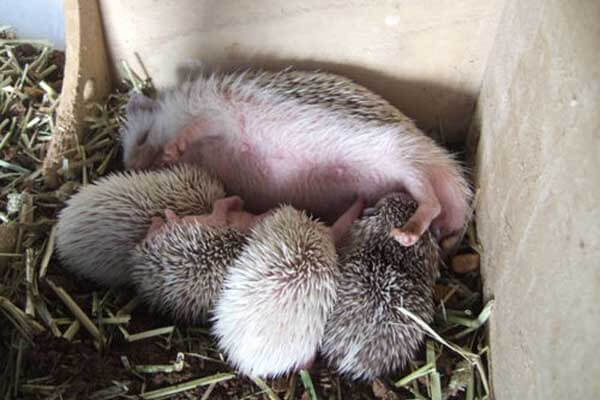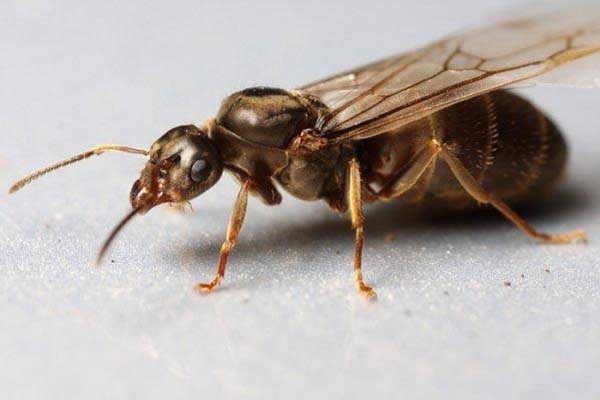Capybaras are giant cavy rodents native to South America.
They are found in Central and South America, inhabiting areas with water bodies. Capybaras live in family groups of 4 to 20 individuals. An animal feeds only on grass. We have collected some interesting facts about the capybara.
Description of the capybara
The body length of adults is 1-1.35 m, height from 50 to 60 cm. The weight of males is 34-63 kg, females – 36-66 kg. The capybara looks like a giant bighead guinea pig. It has a large head with a wide, blunt face, thick upper lip. Its ears are short, rounded shape. Its nostrils are wide. Eyes are small, located high on the head, and a few behind. The tail is almost absent. Paws are short, four fingers on the front, three with short strong claws on the back. Capybara fingers are connected by swimming eardrums. The body surface is covered with long and hard hairs, length from 30 to 120 mm, no undercoat. I paint the upper body of the capybara from a reddish-brown to grayish tone, the tummy is usually yellowish-brown. Young individuals are lighter in color than adults. Adult males have a skin area with large sebaceous glands on top of their faces. Females have six pairs of abdominal nipples on their bellies.
Features of capybara nutrition
Capybara, as a herbivorous animal, eats various fruits and tubers, hay and grass, as well as aquatic plants.
Spreading of the capybara
Capybara is distributed along the shores of various water bodies, mainly in tropical and temperate zones of Central and South America. It is found in Argentina, Bolivia, Brazil, Colombia, Guyana, Paraguay, Peru, Uruguay, Venezuela, and French Guiana. Also inhibits the Orinoco, Amazon, and La Plata rivers. In the mountains, capybaras are distributed at altitudes up to 1300 m above sea level.
A small spillway inhabits the territory from the north of Panama to Colombia and north-west Venezuela.
Common species of capybara
Nowadays, the genus of capybara includes 4 species, 2 of which are extinct:
Capybara common (Hydrochoerus hydrochaeris) – typical, the main representative of the genus; Capybara common (Hydrochoerus hydrochaeris) photo
Capybara or Dodge Small (Hydrochoerus isthmius) – differs from an ordinary capybara in its smaller body size, as well as the main region of distribution, which for it is eastern Panama, northwestern Colombia, and western Venezuela.
Male and female capybara: basic differences
The main manifestation of sexual dimorphism in capybara is that females are usually larger than males. Otherwise, their appearance is the same.
The behavior of the capybara
Capybaras lead a semi-aqueous lifestyle, these animals do not leave the water more than 500-1000 m. The species distribution is due to changes in water level depending on the season. Thus, during the rainy season, capybaras widely diverge along the territory inhabited by them, in the dry season they, on the contrary, concentrate along the banks of large rivers and other water bodies. In search of water and food capybaras can travel very long distances.
The period of highest activity for the capybara is the day when they are worried about humans and predators, rodents move to the nightlife.
The capybara knows how to swim and dive well. The eyes on the head of the animal are high, as well as the ears and nostrils, which allows the capybara to leave them above the water while swimming.
Capybaras are public animals; they usually live in groups of 10-20 animals. Each group consists of a dominant male, adult females, toddlers, and subordinate males that are located on the periphery of the group. About 10% of capybara males lead a solitary life. The dominant male can expel other male competitors from his group. In dry areas, large groups of capybaras gather, up to several hundred animals sometimes gather around water bodies during drought. On average, the capybara herd lives on an area of about 10 hectares, but they mainly concentrate on the area of less than 1 hectare. Such a main area of the capybara is marked with excreta from nasal and anal glands. Conflicts between permanent residents of the territory and strangers are noted.
The capybaras communicate with each other by whistling, as well as clicking and barking sounds, and smells of secrets of olfactory glands, which are located on the muzzles of males.
Capybara Reproduction
Capybaras breed throughout the year, but mating mainly occurs at the beginning of the rainy season (for example, in April-May in Venezuela, in October-November in Mato Grosso, Brazil). During the breeding period, males mark plants with a special secret, which attracts females.
Mating at the capybara takes place in water. Pregnancy lasts about 150 days, ends in September-November. Deliveries take place far from shelters, right on the ground. In one brood there are 2-8 babies, they are born with wool, open eyes, and teething. The weight of the calves reaches 1.5 kg. The newborn babies are cared for by all the females of the group. And almost immediately after the birth they follow their mother and begin to eat grass. Dairy feeding lasts until the age of 3-4 months. In favorable conditions, females capybara bring 2-3 litters.
Young capybaras reach puberty at the age of 15-18 months, at this point their weight is 30-40 kg.
Natural enemies
Natural enemies of the capybara are wild dogs, crocodile caymans, alligators, Original crocodiles, jaguars, ocelots, anacondas. From terrestrial predators, animals hide underwater, while they breathe through the nostrils that remain above the surface.
Capybara hunts cubs with a vulture urubu (Coragyps atratus), other birds of prey, as well as wild dogs.
Interesting facts about the capybara
- The name of the capybara from the dead language of Tupi (which is related to the language of Guaraní Indians) is translated as “eater of thin grass”. In the closest to the original form of “capivara” the word has entered Portuguese and is widely used in Brazil. In the form of “capybara” the name has taken root in English, Russian, Japanese, and several other languages. In Latin America, where Spanish is used, other names of this species are used, such as “carpincho” (in Argentina and Peru), “chigüiro” (in Venezuela and Colombia), “jochi” (in Bolivia), “ñeque” (in Colombia).
- The scientific name of the species “Hydrochoerus hydrochaeris” in translation means “water pig”, where the word vodka appeared in Russian.
- A few centuries ago, the Catholic Church classified capybara as a fish, so their meat was considered lean and allowed to be eaten during fasting.
- Capybara is a natural reservoir of spotted Rocky Mountain Fever.
- Capybara is not a protected species. The Capybara benefits from human agricultural cultivation and the creation of fields and pastures, as it provides them with food and water during a drought. The number of capybaras in the pasture area is usually greater than in undeveloped land. The highest population density is 2-3.5 individuals per hectare.
- In Venezuela, the capybara is bred in a half-wild state on farms to produce meat and leather goods; they are also used as a source of fat for the pharmaceutical industry. Capybara meat tastes and looks like pork.
- Capybaras is a natural reservoir of spotted Rocky Mountains fever (states of Sao Paulo, Rio de Janeiro, Minas Gerais, Brazil), which is caused by the causative agent Rickettsia rickettsii. This disease is transmitted to humans through the Ixodes tick (Amblyomma cajennense), which parasites on capybaras.
Did you like interesting facts about the capybara? Share it with your friends.
Capybara Fun Facts
The capybara is a fascinating animal, and you can learn about its fascinating habits and characteristics by reading these fun facts. The capybara is the largest rodent in the world and stands about a foot and a half at the shoulder. They can grow to be over four feet long and weigh about 75 pounds. These rodents are found throughout South and Central America. Listed below are some interesting facts about the capybara that you can learn.
The capybara’s unusual behavior can be attributed to its difficulty in digesting plant matter. Because the poop already contains food particles, it is easier to digest this food a second time. It also helps reclaim water lost during the process of droppings. Although they may resemble a giant guinea pig or marmot, the capybara is an extremely interesting animal with lots of interesting facts.
A capybara lives in groups of ten to twenty animals. Each group will have a dominant male, females, and subordinate male. The dominant male is usually the largest and the dominant male will defend the territory. A subordinate male will challenge the dominant one, and they will scuffle. During this time, one of the subordinate males will be killed. Fortunately, the capybaras don’t mind humans and are quite social.
The capybara lives in a family of ten to twenty other capybaras. Each family is made up of a dominant male, a female, and a few younger children. There are also several subordinate males, and each of these males must be respected. If they disagree, the subordinate males will challenge the dominant, and they will engage in a scuffle until one leaves the group.
The capybara lives in a family of about 10 to 20 members. Each group will have a dominant male and females. The dominant male is the biggest and will mate with a female only after he has proven himself. The average lifespan of a capybara is ten years in the wild and twelve years in captivity. When you’re in the wild, they live in groups of 10 to 20 members.
When the capybara is in a group, there will be one or two females, but the male will be the dominant male. The dominant male will mate with the females he prefers. In the wild, the capybara will live for about 10 years, but in captivity, they’ll live for about twelve. When compared to their human counterparts, the capybara can live up to one hundred and fifty pounds.
The capybara is the largest rodent in the world. It can reach up to four feet long and weigh up to 145 pounds. They are a member of the Hydrochoerus family and resemble a large guinea pig. In the wild, capybaras can live for up to ten years. In captivity, they can live up to twelve years. There are a few important things you should know about the capybara.
The capybara is a fascinating animal. It is the largest rodent in the world and can grow up to be as big as two feet. This animal can weigh up to 145 pounds, and if it is healthy, it can live for about ten years. The capybara’s lifespan depends on the species, but they can grow up to be as large as a guinea pig!
While capybaras live on land, they spend a lot of time in the water. Despite having webbed feet, they are able to hold their breath for more than five minutes. They can even sleep underwater, which makes them a highly adaptable animals for a variety of environments. You can also find out more about the capybara by reading these fun facts. They are adorable animals, and they will make you laugh when you read them!
The capybara is the world’s largest rodent. Their length ranges from 106 to 134cm and weighs about the same as a small dog. They are closely related to Guinea pigs and are related to many other mammals. They can run up to 35 mph and sleep on the water. In addition to eating fruits and vegetables, the capybara also uses their mouths to chew on plant materials.
